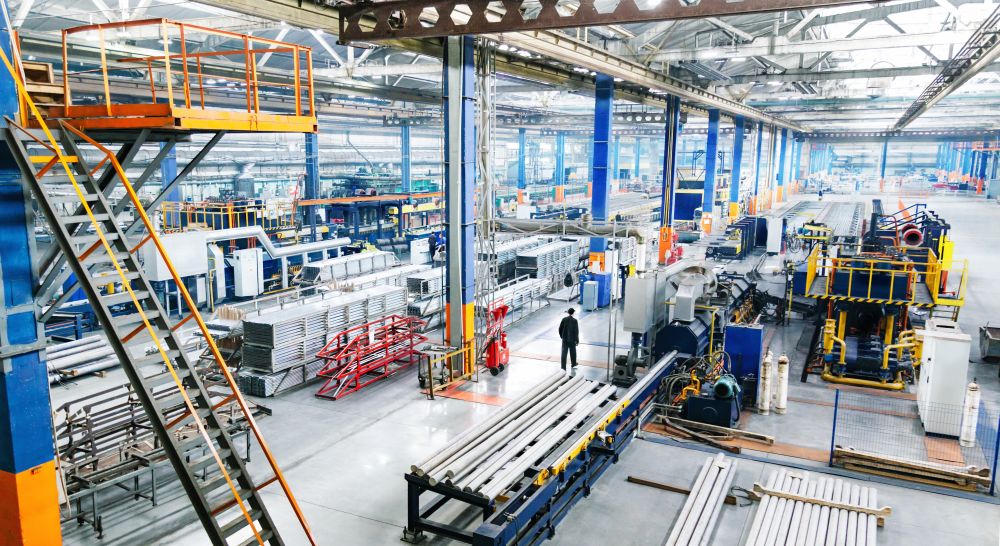There’s no doubt that manufacturing projects are complex: they involve the coordination of various processes and resources, e.g., equipment, personnel, materials, and facilities. At the same time, they are subjected to the negative impact of external factors that can derail schedules and budgets and jeopardize the project success. So, manufacturing project managers should pay the closest attention to developing an effective risk management strategy.
Read the article to discover the key risks manufacturing projects face and learn how project managers with the assistance of project manufacturing software can address these risks effectively and achieve project success.
Common Risks in Manufacturing Projects
Here’s an overview of the most essential manufacturing risks that affect manufacturing project management.
1. Supply chain disruptions
This challenge is quite common across industries and was initially caused by COVID-19 pandemic. Currently, it’s intensified by military conflicts and geopolitical tensions. Why are manufacturing projects vulnerable to supply chain issues? Because supply chain disruptions cause raw material shortages, transportation delays, etc. Manufacturing projects have interdependent processes, often with other projects, so a delay in one of them will snowball and cause major disruptions.
2. Risks related to technology implementation
Implementing advanced technologies is a must in manufacturing—they allow companies to increase operational efficiency, deliver products faster, and increase competitiveness. At the same time, adopting advanced technologies is always somewhat risky, and here’s why:
- the results can be unpredictable;
- increased cyber risks;
- it takes time for employees to master innovative technologies.
All these factors can lead to project delays, budget overruns, or poor quality of the delivered products.
3. Equipment failure
The manufacturing process involves working with equipment and machinery that are vulnerable to breakdowns. Equipment/machinery failure can result in extending projects’ timelines and budget overruns. What is more, this challenge can bring additional risks for employee’s safety and the quality of the manufactured product.
4. Labor shortage
Similarly to supply chain disruptions, this risk is common across industries. Manufacturing industry faces workforce shortages for the following reasons:
- Workers’ aging;
- A lack of employees with required technical/digital expertise;
- Challenges with employee retention.
As a result, it can be challenging to staff manufacturing project with required human resources, which makes it difficult to fulfill the demand. A lack of resources can also cause additional expenditures and extend a project’s timeline.
5. Regulatory compliance risks
Manufacturing projects must comply with strict regulatory requirements. They regulate the quality of the manufactured products and safety standards, facilitate sustainability, and more. Failure to comply with these regulations can lead to penalties that can negatively impact a manufacturing company’s reputation. In addition, problems with regulatory compliance can lead to project delays and hamper the project flow.
6. Safety risks
Manufacturing environment is hazardous—working with complex equipment and machinery or harmful materials can lead to accidents and injuries. These accidents can also affect the success of manufacturing project management, e.g., they can increase projects’ lead times, increase costs, and jeopardize project success.
How can manufacturers mitigate all these risks and lead their projects toward successful completion? Read the next section to discover some actionable risk management strategies.
Tips on Effective Risk Management in Manufacturing Projects
Risk management process in manufacturing projects involves the same steps as in other industries:
- Risk identification;
- Risk assessment and prioritization;
- Planning risk mitigation strategies;
- Regular monitoring and control.
Let’s consider some recommendations that will help you manage manufacturing project risks most effectively.
Prioritize risks
Risk prioritization is an essential aspect of effective risk management. Not every risk will have the same impact on the project flow. Therefore, you need to assess the likelihood of each risk-bearing event along with their potential impact on a project. Risk prioritization is meant to handle the negative impact that those risks will carry and enable allocation of resources that will be necessary to mitigate such risks.
Use scenario analysis
Simulating various scenarios makes it possible to foresee some disruptions (e.g., equipment failure), asses their impact on the manufacturing process or the project flow, and come up with appropriate mitigation plans. You can use project management software with advanced capabilities to run different scenarios, identify potential project risks, and prepare responses to these events. Therefore, scenario analysis will provide you with grounds for making informed decisions, which is essential for effective risk management.
Engage stakeholders in risk management
The responsibility for risk management should be divided between different project stakeholders (team members, customers, senior management). They can help with risk identification, as they can see them from their perspectives. This approach will provide a project manager with a comprehensive picture of all potential threats and opportunities. It’s also a good idea to engage stakeholders in the risk mitigation process: when this responsibility is shared with various project participants, the effectiveness of risk management increases.
Take advantage of predictive maintenance
As we wrote earlier, manufacturing projects often involve work with machinery and equipment. To reduce risks caused by equipment failure, you should make sure that it’s properly functioning. With advanced technologies like AI and the Internet of Things, you can implement predictive maintenance—assess the condition of equipment and forecast the time of required maintenance. This approach helps prevent projects from unexpected equipment failure and reduces the risk of delays.
Prepare employees for addressing risks
Effective risk management requires team members’ readiness for identifying and addressing risks. They are the first who face risk-bearing situations, so they should be equipped with required knowledge and tools to recognize and properly tackle risks. Therefore, providing employees with regular training is one of the keys to effective risk management process.
Leverage manufacturing project management software
Manufacturing PM tools play an important role in effective risk management. Let’s review their capabilities that assist in the risk management process.
- Analyzing real-time and historical data;
- Providing actionable insights into the state of projects, their progress and performance;
- Conducting scenario analysis to anticipate possible risks and addressing the existing ones;
- Allocating resources effectively;
- Improving communication and collaboration.
Therefore, a robust project management solution can help manufacturing companies minimize risks, and reduce the negative impact of unfavorable events on the workflow.
Key Takeaways
Let’s summarize the key points of the articles:
- Complexity: Manufacturing projects are complex endeavors involving interrelated processes, diverse resources, working with equipment and machinery. Their complexity is intensified by risks typical for the manufacturing industry: supply chain disruptions, labor shortages, equipment failure, safety and regulatory compliance risks as well as risks related to technology implementation.
- Risk Management: To manage risks effectively in manufacturing projects, you should prioritize potential risks depending on their probability and impact, use scenario planning, engage stakeholders in the risk management process, utilize predictive maintenance, and train employees to work with risks.
- Enabling Simplicity: Manufacturing project management software simplifies risk management in manufacturing projects and makes it more effective.




